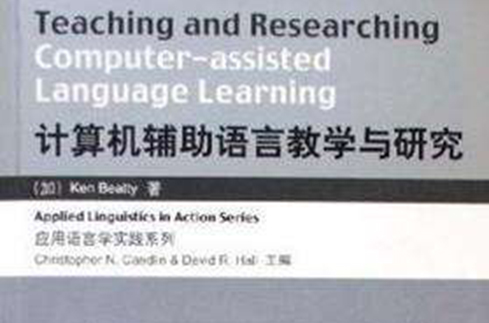《計算機輔助語言教學與研究》是2005年12月1日外語教學與研究出版社出版的圖書,作者是(加拿大)貝蒂
基本介紹
- 書名:計算機輔助語言教學與研究
- 頁數:259頁
- 出版時間:第1版 (2005年12月1日)
- 裝幀:平裝
圖書信息,作者簡介,內容簡介,目錄,
圖書信息
出版社: 外語教學與研究出版社;
叢書名: 套用語言學實踐系列
:
正文語種: 簡體中文, 英語
開本: 16
ISBN: 7560052479, 9787560052472
條形碼: 9787560052472
尺寸: 22.9 x 15.3 x 1.1 cm
重量: 340 g
作者簡介
作者:(加拿大)貝蒂
內容簡介
《計算機輔助語言教學與研究》對計算機輔助語言學習進行了全面概述,對與其相關的一些科研項目進行了步驟指導,以軟體、網站等形式為讀者提供了該領域內豐富的資源,並附有術語表。計算機輔助語言學習是套用語言學的一個新興的、正在迅速發展的分支。
目錄
General Editors' Preface
Acknowledgements
Introduction
Section I Key concepts
The emergence of CALL
The emergence of CALL
Technology driving CALL
The changing focus of research in CALL
Summary
A brief history of CALL
CALL in the 1950s and 1960s
Simulations
CALL in the 1970s and 1980s
CALL in the 1990s
Summary
Hypertext, hypermedia and multimedia
Hypertext
Hypermedia
Multimedia
Antecedents of multimedia
Science fiction and CALL
The printed book and CALL
Applications to general learning
Applications of multimedia to language learning
Summary
Eight CALL applications
Word processing
Games
Literature
Corpus linguistics
Computer-mediated communication resources
Adapting other materials for CALL
Personal Digital Assistants (PDA)
Summary
Section II The place of CALL in research and teaching
Second-language Acquisition and models of instruction
Concepts in SLA, behaviourism and constructivism
Comprehensible input and output
Criticism of comprehensible input and output theory
Behaviourist and constructivist models of instruction
Behaviourism
Constructivism
The role of collaboration and negotiation of meaning
in the two models
Summary
Collaboration and negotiation of meaning
The place of collaboration in CALL
Structuring collaboration
Differences between collaboration and other terms
The range of collaboration and CALL
Collaboration at the computer
Benefits of collaborative learning at the computer
Collaboration, CALL and SLA
Collaboration at the computer as evidenced by discourse
Challenges to collaboration
Challenges to collaboration in a CALL context
Discourse that evidences challenges to collaboration
Summary
Defining a model of CALL
Defining model
The need for a CALL model
A model of current non-CALL language learning
Dunkin and Biddle's model in a CALL context
Various views of CALL
Teacher and pupil classroom behaviour: activities used
in CALL
A virtual classroom
Aspects of a CALL model
Summary
Theoretical and pedagogical concerns
Concerns for software development
Pedagogical concerns for classroom practice
Evaluating software
Learning and working styles
Evolving technology
Commercial software
Making better use of existing materials
Copyright and plagiarism
Viruses
Safety online
Technological have-nots
Summary
Section III Researching CALL
Current research interests
A new field: reporting CALL research
Approaches to research in CALL
The computer as a tool of research
The role of commercial publishers
Reviewing current studies: a survey
Conducting research
Action research
Summary
Research
Research context 1: The literature review
Research context 2: A pilot study
Research context 3: Corpus linguistics
Research context 4: Error analysis
Research context 5: The experiment
Research context 6: A case study
Research context 7: The survey
Research context 8: The ethnographic approach
Conclusion
Section IV Resources
Glossary of key terms
References
Index

